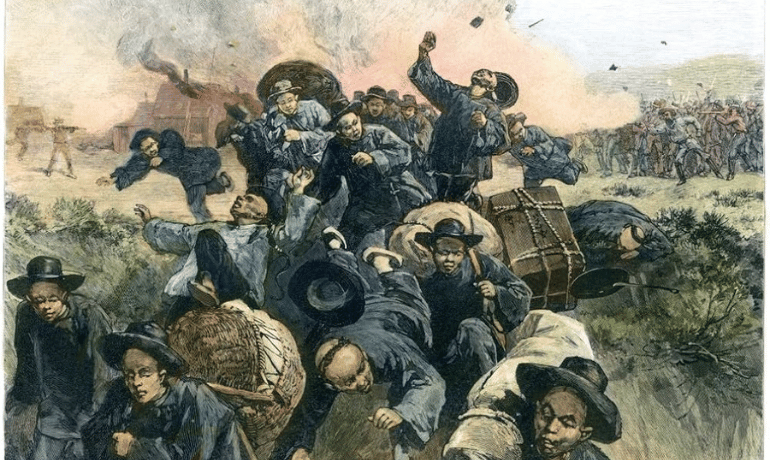The Rock Springs Massacre is a significant yet often overlooked event in American history that highlights the complexities of labor relations and racial tensions in the late 19th century. On September 2, 1885, in Rock Springs, Wyoming, a violent clash erupted between white miners and Chinese immigrant laborers. This tragic incident not only resulted in loss of life but also had lasting implications for labor rights and racial dynamics in the United States. In this blog, we will discuss the causes, events, and consequences of the Rock Springs Massacre while using keywords to ensure the article is SEO-friendly and informative for readers.
Understanding the Background of the Rock Springs Massacre
The Economic Context
During the late 1800s, the United States was undergoing significant industrialization, particularly in the mining sector. The demand for coal was rising, driven by the expansion of railroads and the growth of cities. Wyoming, rich in natural resources, attracted many miners, including a large number of Chinese immigrants seeking work and better lives. However, the influx of Chinese laborers created tensions among the predominantly white workforce, who viewed these immigrants as competition for jobs.
Racial Tensions and Economic Struggles
The white miners’ resentment towards Chinese workers stemmed from various factors, including economic hardship and racial prejudice. As mining jobs became scarcer due to market fluctuations, the presence of Chinese laborers intensified feelings of animosity. White miners organized strikes and demanded that the mine owners hire only white workers, exacerbating the volatile atmosphere leading up to the massacre.
The Events Leading to the Massacre
Escalation of Hostilities
In the weeks leading up to the massacre, tensions in Rock Springs escalated. On September 1, 1885, a group of white miners went on strike, demanding the dismissal of Chinese workers. The mine owners, however, refused to acquiesce to these demands, leading to a standoff. As frustrations mounted, the situation became increasingly dangerous.
The Massacre Unfolds
On the evening of September 2, 1885, a mob of white miners attacked the Chinese workers in Rock Springs. Armed with clubs and guns, they entered the Chinese community, setting homes ablaze and violently assaulting the inhabitants. Reports indicate that at least 28 Chinese miners were killed, and many more were injured. The violence spread throughout the area, with the mob destroying property and leaving the community devastated.
Aftermath of the Rock Springs Massacre
Government Response
In the wake of the massacre, the federal government faced immense pressure to address the situation. While some officials condemned the violence, the response was often tepid. Investigations were launched, but they yielded little in the way of accountability for the perpetrators. Many white miners faced no consequences for their actions, further entrenching the injustices faced by Chinese immigrants.
Impact on Chinese Communities
The Rock Springs Massacre had a profound impact on Chinese communities throughout the West. Fearful of further violence, many Chinese immigrants fled the area, leading to a significant decline in the Chinese population in Rock Springs. The massacre also fueled anti-Chinese sentiment across the nation, leading to the passage of more restrictive immigration laws, including the Chinese Exclusion Act of 1882.
The Legacy of the Rock Springs Massacre
Historical Significance
The Rock Springs Massacre serves as a reminder of the deep-seated racial tensions and economic struggles that have shaped American history. It highlights the challenges faced by immigrant communities in their pursuit of the American Dream. Understanding this event is crucial for recognizing the historical context of labor relations and racial dynamics in the United States.
Lessons Learned
The massacre underscores the importance of addressing labor disputes and fostering inclusivity in the workforce. It serves as a reminder of the consequences of unchecked racial animosity and the need for policies that promote equity and justice in the workplace. By reflecting on the lessons from the Rock Springs Massacre, we can work towards a more just and equitable society.
Conclusion
The Rock Springs Massacre remains a tragic chapter in American history, one that highlights the complexities of labor relations and the challenges faced by immigrant communities. By understanding the events leading up to the massacre, its aftermath, and its legacy, we can better appreciate the ongoing struggles for justice and equality in our society. Remembering this dark moment in history is essential for ensuring that we do not repeat the mistakes of the past and continue to strive for a more inclusive and equitable future.
As we reflect on the Rock Springs Massacre, it is crucial to educate ourselves and others about the events that shaped our history. Sharing this knowledge can promote discussions around race, labor rights, and the importance of inclusivity in our communities. Let’s honor the memory of those affected by the massacre by advocating for justice and equality in all aspects of society.






